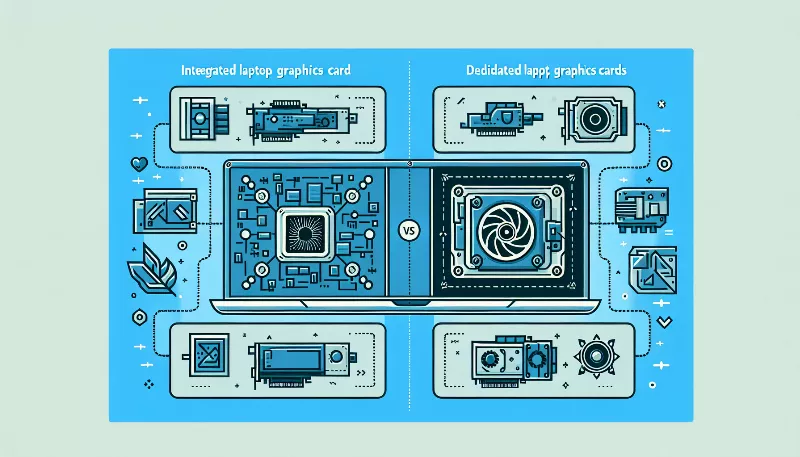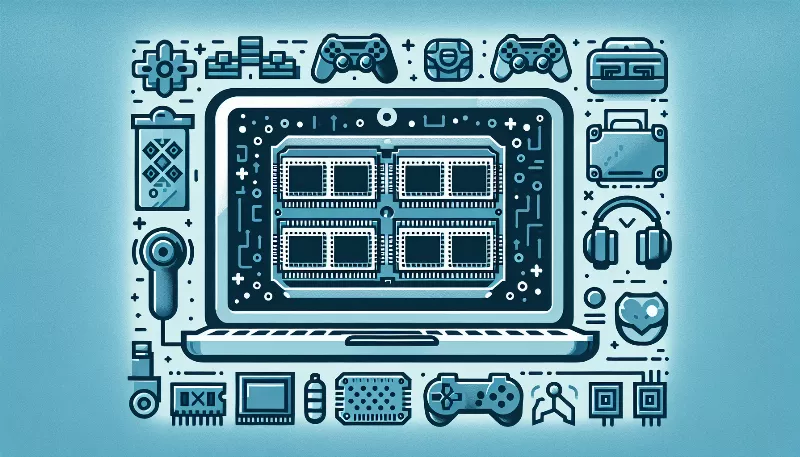What are the key differences between integrated and dedicated laptop graphics cards?
Discover the performance & efficiency differences between integrated & dedicated GPUs in laptops. Make an informed choice for gaming or professional use.

Unveiling the World of Laptop Graphics
When it comes to laptop graphics, there's a vibrant spectrum of capabilities that cater to different users. From the casual browser to the hardcore gamer, understanding the distinction between integrated and dedicated graphics cards is crucial for making an informed purchase. Let's dive into the dynamic realm of laptop graphics and explore the key differences that set integrated and dedicated options apart!
Integrated Graphics: The Efficient Multitasker
Integrated graphics are like the Swiss Army knife of visual processing - versatile and energy-efficient. They're built right into the same chip as the CPU, allowing them to share memory and resources. This symbiotic relationship means that laptops with integrated graphics are typically lighter on power consumption, which translates to longer battery life - a boon for those on the go.
However, integrated graphics have their limitations. Since they utilize part of the system's RAM, they may not handle graphically intensive tasks as smoothly as their dedicated counterparts. This makes them ideal for everyday activities like web browsing, office applications, and streaming video, but less so for high-end gaming or professional 3D rendering.
Dedicated Graphics: The Powerhouse Performer
On the other side of the spectrum, we have dedicated graphics cards - the heavy lifters of the visual world. These standalone units boast their own RAM, known as VRAM, allowing them to process complex graphical tasks independently of the system's memory. This specialization gives them a significant edge in performance, making them the go-to choice for gamers, video editors, and graphic designers who demand the best visual fidelity and smoothest frame rates.
Dedicated graphics cards come in various shapes and sizes, with offerings from industry giants like NVIDIA and AMD leading the pack. They're designed to push the limits of what's visually possible on a laptop, enabling cutting-edge features such as ray tracing and AI-enhanced image processing. But this power comes at a cost, both literally and figuratively, as laptops with dedicated graphics tend to be pricier and consume more battery life.
Choosing Your Graphical Companion
Deciding between integrated and dedicated graphics boils down to understanding your needs. If you're after a lightweight, energy-efficient laptop for general use, integrated graphics will serve you well. But if you crave the highest levels of performance for gaming or creative work, a dedicated graphics card is your ticket to visual nirvana.
Remember, the world of technology is ever-evolving, and the lines between integrated and dedicated graphics continue to blur. Advances in integrated graphics performance are closing the gap, while dedicated graphics are becoming more energy-efficient. So, keep an eye on the latest developments to make the best choice for your visual computing needs!
Final Thoughts: A Spectrum of Visual Possibilities
In conclusion, whether you opt for the multitasking prowess of integrated graphics or the raw power of dedicated graphics cards, there's a laptop out there that's perfect for your visual adventures. Embrace the differences, weigh your options, and prepare to be dazzled by the incredible graphics that modern laptops have to offer!










